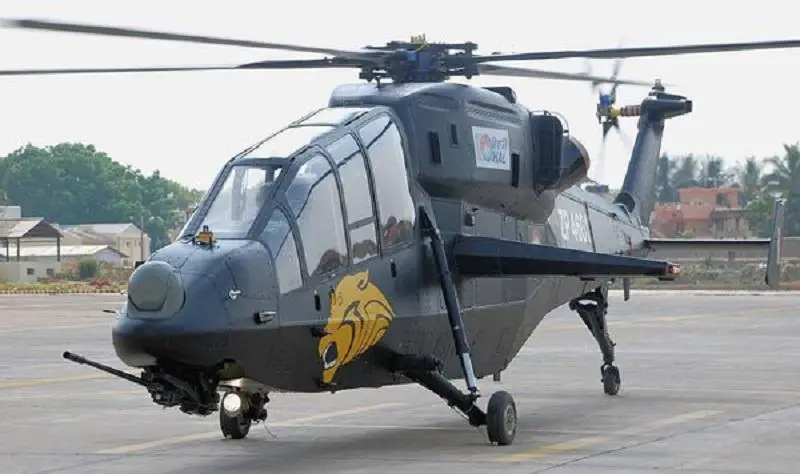India’s Cabinet Committee on Security (CCS) has approved the procurement of 15 Light Combat Helicopters (LCHs) developed by Hindustan Aeronautics Limited (HAL). Ten of the new aircraft are intended for the Indian Air Force (IAF), while five will go to the Indian Army. HAL said that the limited-series production variant will have an indigenous content of 45%. However, the regular-series production is expected to increase this content to 55%. The aircraft will be manufactured under a limited-series production run at a cost of INR38.87 billion (USD513.8 million). The Indian Ministry of Defence (MoD) added in a press statement that an additional INR3.77 billion had been approved for infrastructure.
The HAL Light Combat Helicopter (LCH) is an Indian multi-role attack helicopter designed and manufactured by the Hindustan Aeronautics Limited (HAL). The LCH has been ordered by the Indian Air Force and the Indian Army. Its flight ceiling is the highest among all attack helicopters. The impetus for the development of the LCH came in the form of the Kargil War, a conflict fought between India and neighbouring Pakistan in 1999, which revealed the Indian armed forces lacked a suitable armed rotorcraft capable of operating unrestricted in the high-altitude theatre. The LCH drew extensively on an earlier indigenous helicopter developed and manufactured by HAL, the Dhruv; using this rotorcraft as a starting point has been attributed as significantly reducing the cost of the programme.

The LCH is furnished with a glass cockpit which accommodates an Integrated Avionics and Display System (IADS) which used an array of multifunction displays in conjunction with the onboard target acquisition and designation (TADS) system. A prominent element of the TADS system is the helmet mounted sight (HMS), which serves as the principal instrument for targeting and triggering the rotorcraft’s armaments. The onboard sensor suite is Elbit CoMPASS, produced locally by Bharat Electronics Limited. It consists of a CCD camera, a forward looking infrared (FLIR) imaging sensor, a laser rangefinder and a laser designator to facilitate target acquisition under all-weather conditions, including under nighttime conditions.
HAL had selected the M621 cannon to serve as the gun armament of the helicopter. The M621 cannon is incorporated in a Nexter-built THL 20 turret and integrated into a helmet-mounted sight.Various missiles can also be equipped upon the LCH; these include a maximum of four 70 mm anti-tank guided missiles – options are to include both foreign and Indian-built missiles, the latter in the form of the Helina anti-tank missile. In terms of air-to-air missiles, the LCH shall be capable of being armed with the MBDA Mistral 2 missile. Payloads of rockets are also available as offensive options for attacking targets with. This suite comprises various defensive elements include a radar warning receiver (RWR), laser warning receiver (LWR) and a missile approach warning (MAW) system.












